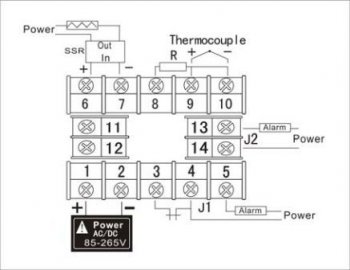LR Adkins
Well-Known Member
I know...it's been hashed over a hundred times on here but I can't find enough information to get my kiln to HT oven conversion wired. I have spent the last two days searching while waiting on the parts to come in. Thought I had it figured out until I got the parts today. There's more connections on the PID than I was expecting so now I'm more confused than ever. I have a PID, SSR and a TC ready to go.
Could someone please tell me where the wires go. The PID is from Auber, model SYL-2362, the SSR is a Mager, model MGR-1D4825 - 25 amp.
I'll try to get a decent diagram of the connections on here.
Could someone please tell me where the wires go. The PID is from Auber, model SYL-2362, the SSR is a Mager, model MGR-1D4825 - 25 amp.
I'll try to get a decent diagram of the connections on here.


